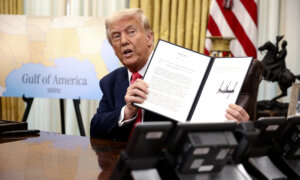In a bold move that has rippled across global markets, President Donald Trump introduced 25 percent tariffs on steel and aluminum imports, sparking a heated debate about their impact on the American economy. Effective from shortly after midnight on March 12, these tariffs aim to bolster domestic production and bring jobs back to the U.S. But how will they affect industries, consumers, and international relations? Let’s delve into the details and understand the broader implications of these new policies.
Understanding Trump’s Tariff Strategy
President Trump’s strategy is clear: protect American industries from what he perceives as unfair trade practices. The new standards mandate that steel must be “melted and poured” and aluminum “smelted and cast” in North America. This is a direct response to nations like China, which have been accused of circumventing trade restrictions.
The Goals Behind the Tariffs
The President has stated that the primary goals of these tariffs are threefold:
- To stop countries from taking advantage of the United States.
- To bolster domestic production of steel and aluminum.
- To return jobs to the U.S. economy.
“This is a big deal, the beginning of making America rich again,” Trump declared during a press conference at the Oval Office on February 10. He emphasized the need for these materials to be produced domestically, stating, “Our nation requires steel and aluminum to be made in America, not in foreign lands.”
The Immediate Impact on Foreign Markets
While the tariffs aim to protect American industries, they are poised to adversely affect foreign markets. Last year, Canada, a major trading partner, accounted for more than 50 percent of aluminum shipped to the U.S. economy. The sudden imposition of these tariffs has led to a ripple effect, causing tension between the U.S. and its neighbors.
The Canada Conundrum
President Trump escalated tensions when he announced on Truth Social on March 10 that he would raise tariffs on Canadian aluminum and steel imports to 50 percent. This threat came after Ontario Premier Doug Ford imposed a 25 percent surcharge on electricity exports to some U.S. states and threatened to cut off their electricity.
However, following a “productive conversation about the economic relationship” with Commerce Secretary Howard Lutnick, Ford agreed to suspend the 25 percent tax. When asked if he would drop the doubling of levies, Trump responded, “Probably so, yeah. He was a gentleman.”
Industry Reactions and the Loophole Debate
The American Iron and Steel Institute, along with other industry groups, has been vocal about the tariffs. They argue that the exclusion process has been exploited by foreign producers to avoid levies. In a letter shared with The Epoch Times, these organizations noted that the steel tariffs first imposed by Trump in 2018 allowed the industry to rehire terminated workers, restart idled plants, and invest billions in new and upgraded facilities.
However, they also pointed out that over the years, many country-wide and product-specific exemptions to the tariffs were granted, which eroded the effectiveness of the steel Section 232 measures. “The degradation of the Section 232 tariffs and out-of-control global excess steel production led to increases in steel imports and imports of downstream derivative products, once again threatening the viability of domestic steel producers and U.S. national security,” the letter stated.
Support from Industry Leaders
Philip K. Bell, the president of the Steel Manufacturers Association, applauded the tariffs, stating, “President Trump understands that America’s steel industry is the backbone of our economy. A thriving domestic steel industry is critical to U.S. national, energy, and economic security.”
However, the United Steelworkers (USW) International leadership offered mixed feedback. While they support Trump’s efforts to halt global overcapacity, they disapprove of targeting “trusted trade partners, like Canada.”
Economic Implications and Job Impact
The Tax Foundation has analyzed the potential economic impact of these tariffs. According to their findings, President Trump’s 25 percent tariffs on Canada and Mexico could trim the long-run GDP by 0.2 percent, reduce after-tax incomes by an average of 0.6 percent (without retaliatory tariffs), and decrease hours worked by 223,000 full-time equivalent jobs.
The Challenge of Capacity Utilization
ING economists have noted that even if tariffs revitalized the industry, U.S. capacity utilization for aluminum and steel would need to increase by 10 percentage points to reach the Trump administration’s goal of 80 percent. They highlighted that in 2024, the output of the U.S. steel industry was 1 percent lower than it had been in 2017 before the introduction of the first round of tariffs by Trump, while the aluminum industry produced almost 10 percent less.
The Inflationary Debate
The inflationary effects of the tariffs have been a topic of debate. Brian Sponheimer, a portfolio manager at the Gabelli Dividend & Income Trust, believes it is unlikely that consumers will bear much of the tariff-related costs. He noted that aluminum is likely to be more immediately impactful, given that the U.S. imports about half of its consumed steel. “Clearly, any additional tariffs will likely lead to a friction period where purchasing patterns change, with some costs passed along but some very likely to end up eaten by margin,” Sponheimer said.
Analysts’ Concerns
Analysts at the Center for Strategic and International Studies concluded in a report that the levies “will raise prices, cost American jobs, and strain alliances.” They argue that instead of imposing tariffs, the United States should collaborate with trading partners to stop China. “The real solution lies in working with partners to shut down avenues for China’s dumping and create a level playing field in global trade,” they stated.
The Broader Implications for Global Trade
Trump’s tariffs on steel and aluminum are not just about protecting domestic industries; they are a statement about America’s stance on global trade. By imposing these tariffs, the U.S. is signaling its willingness to take bold measures to protect its interests, even if it means straining relations with long-standing allies like Canada.
The ripple effects of these tariffs are already visible. Countries like Canada have responded with their own measures, leading to a tit-for-tat scenario that could escalate into a broader trade war. The challenge for the U.S. will be to balance its protectionist policies with the need to maintain strong trade relationships.
The Role of China
China has been a focal point of Trump’s trade policies. The President has accused China of dumping steel and aluminum into global markets, which has led to overcapacity and depressed prices. By targeting imports from all countries, Trump aims to prevent China from using other nations as a backdoor to access the U.S. market.
However, analysts argue that a more effective approach would be to work with other countries to address the issue of China’s overproduction directly. This could involve negotiating stricter trade agreements, imposing targeted sanctions, or collaborating on global trade policies that limit China’s ability to flood markets with cheap goods.
Looking Ahead: The Future of American Manufacturing
As the tariffs take effect, the future of American manufacturing hangs in the balance. The steel and aluminum industries are crucial to the U.S. economy, providing materials for everything from cars and airplanes to buildings and infrastructure. The success of Trump’s tariffs will depend on their ability to revitalize these industries without causing undue harm to consumers and the broader economy.
The immediate impact of the tariffs has been a surge in domestic production and a temporary boost to the industry. Steel mills have restarted, and aluminum smelters have ramped up production. However, the long-term effects are still uncertain. Will the tariffs lead to sustained growth, or will they result in higher prices and reduced competitiveness for American companies?
The Need for a Comprehensive Strategy
To truly revitalize the American manufacturing sector, experts argue that a comprehensive strategy is needed. This could include:
- Investing in research and development to improve production processes and create new products.
- Providing incentives for companies to invest in domestic production facilities.
- Negotiating trade agreements that protect American industries while maintaining access to global markets.
- Addressing the issue of overcapacity in countries like China through international cooperation.
By taking a holistic approach, the U.S. can strengthen its manufacturing base and ensure long-term economic growth. The tariffs on steel and aluminum are just one piece of the puzzle, and their success will depend on how they fit into a broader strategy.
Conclusion: Navigating the New Economic Landscape
As the U.S. navigates the new economic landscape shaped by Trump’s tariffs on steel and aluminum, the stakes are high. The immediate impact has been a boost to domestic industries, but the long-term effects remain to be seen. Will these tariffs lead to a resurgence of American manufacturing, or will they result in higher prices and strained international relationships?
The answer lies in how the U.S. balances its protectionist policies with the need to maintain strong global trade ties. By working with other countries to address the issue of overproduction and unfair trade practices, the U.S. can create a level playing field that benefits American industries and consumers alike.
As we move forward, it will be crucial to monitor the impact of these tariffs on the economy, jobs, and global trade relations. The road ahead may be challenging, but with a clear strategy and a commitment to collaboration, the U.S. can navigate the new economic landscape and emerge stronger than ever.
Source: www.theepochtimes.com

